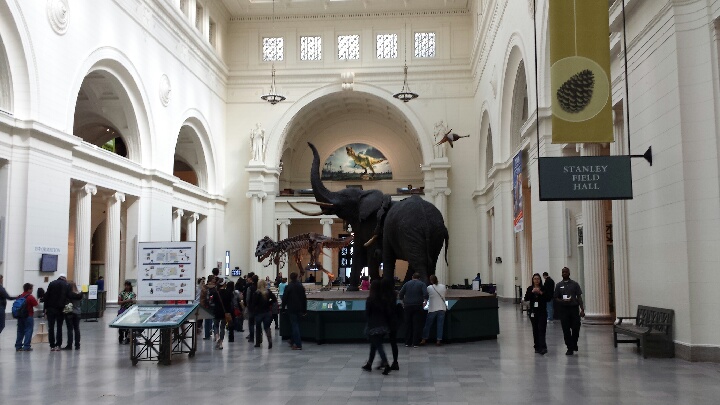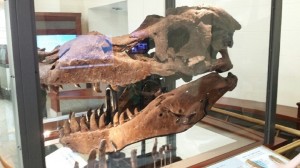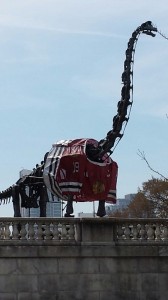
Chicago, IL–The wealth of museums in Chicago make it difficult to decide which to explore first. One of the original city museums, the Field Museum of Natural History, founded right after the 1893 World’s Columbian Exposition in one of the fair buildings. It was later moved to its current site at 1400 S. Lake Shore Drive. The Field Museum is one of the largest natural history museums in the world, making it a multi-day destination.
 Most visitors are attracted in the main hall to Sue, at 42-feet-long and 13 feet high, the most complete and best-preserved Tyrannosaurus rex fossil. It’s only 67 million years old!
Most visitors are attracted in the main hall to Sue, at 42-feet-long and 13 feet high, the most complete and best-preserved Tyrannosaurus rex fossil. It’s only 67 million years old!
Be sure to check out Sue’s enormous actual fossil head upstairs in a glass case, which couldn’t be put on the model downstairs due to its 600-pound weight.
Dioramas in the Hall of Mammals feature taxidermied animals in their natural habitat. The Field’s first taxidermist, Carl Akeley, revolutionized the art of preserving animals in natural poses. The elephants in the main hall are his work, as well as the famed man-eating lions of Tsavo, a pride of lions that ate 35 people in Kenya, stopping construction in 1898 of a railroad project over the Tsavo River. Chicago’s WGN TV featured the dioramas and their continued effect on education this video.
Lovers of gems and minerals will want to check out the Grainger Hall of Gems, highlighted by a Louis Comfort Tiffany stained glass window. The hall was renovated in 2009 and features 600 gems: diamonds, rubies, emeralds, opals and others from around the world, as well as 150 pieces of jewelry.
Open every day from 9 a.m. to 5 p.m., the Field Museum’s basic admission is $18 for adults, $13 for children ages 3-11.
Of course, for Chicagoans, the Field is a source of pride, especially during playoff season. In late April and early May, a dinosaur displays his Blackhawks pride. 